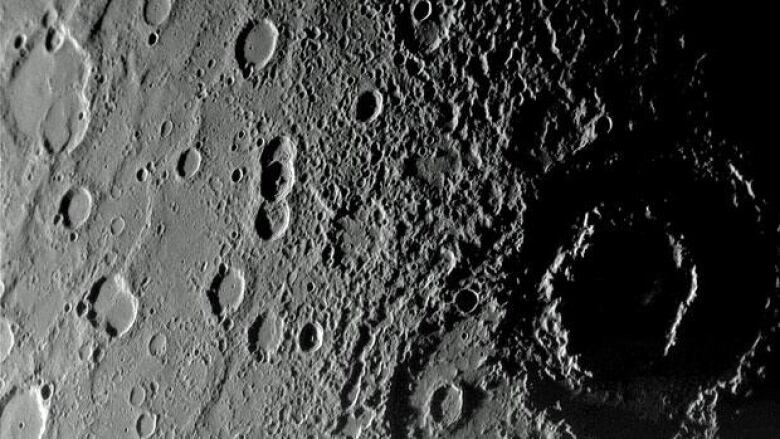Messenger spacecraft enters Mercury's orbit
It's taken NASA craft 6 years to travel 4.9 billion miles to the sun's closest neighbour

Latest
- The Messenger spacecraft is about the size of a desk
- It takes eight minutes for NASA signals to reach the craft
- Scientists excited about investigating Mercury's mysterious magnetic field and unusual density
For the first time, Earth has a regular orbiting eye-in-the-sky spying on the solar system's smallest and strangest planet, Mercury.
NASA's spacecraft called Messenger successfully veered into a pinpoint orbit Thursday night after a 6 -year trip and 4.9 billion miles and tricky manoeuvring to fend off the gravitational pull of the sun. It is the fifth planet in our solar system that NASA has orbited, in addition to the Earth and the moon.
'We are really ready to learn about one of Earth's nearest neighbours for the first time. Mercury is a planet where there are many things going on.' Sean Solomon, Messenger chief scientist
"It was right on the money," Messenger's chief engineer, Eric Finnegan, said. Messenger is in orbit that brings it as close as 120 miles above the planet's surface. "This is as close you can possibly get to being perfect."
"Everybody was whooping and hollering; we are elated," Finnegan said. "There's a lot of work left to be done, but we are there."
Mercury is not only difficult to get to, but it has some of the most extremes in the solar system. Temperatures there swing wildly byhundreds of degrees.Radar shows that there is likely frozen ice in some of the craters, something Messenger will try to confirm.

Robert Strom of the University of Arizona was a scientist on the Mariner mission and current Messenger missions and he said for a while he thought he wouldn't get a second peek at the eccentric Mercury.
"I am just so thrilled it isn't funny," Strom said by telephone minutes after NASA confirmed that Messenger was in orbit.
"Thirty-six years waiting for this day. It's just unbelievable."
Strom said he and all his colleagues were nervous as the desk-sized spacecraft automatically shifted into an egg-shaped orbit, with controllers on Earth unable to change commands because it takes eight minutes for signals to travel the approximately 100 million miles from Mercury to Earth.
"This was not easy. This was a very, very difficult manoeuvre to get into orbit," Strom told The Associated Press.
A NASA Twitter account under Messenger's name gave play-by-play accounts as it arrived at the small planet. Messenger exchanged tweets with Voyager 2, one of NASA's oldest and most-distant spacecraft. Voyager 2, launched in 1977 and now at the edge of the solar system, tweeted "good luck" and Messenger answered with a tweet: "Many thanks! Cold out there? Kinda warm where I am."
Mission costing NASA $446M
Messenger, which cost NASA $446 million, was launched in 2004.
Next month it should start transmitting pictures and investigate Mercury's mysterious magnetic field and unusual density.
"This is when the real mission begins," Messenger chief scientist Sean Solomon said an hour after Messenger was safely in Mercury's orbit. "We are really ready to learn about one of Earth's nearest neighbours for the first time."
For example, Solomon said Mercury, Venus, Earth and Mars formed at the same time, but Mercury "came out very different."
"Mercury is a planet where there are many things going on," Solomon said.












_(720p).jpg)


 OFFICIAL HD MUSIC VIDEO.jpg)
.jpg)



























































































